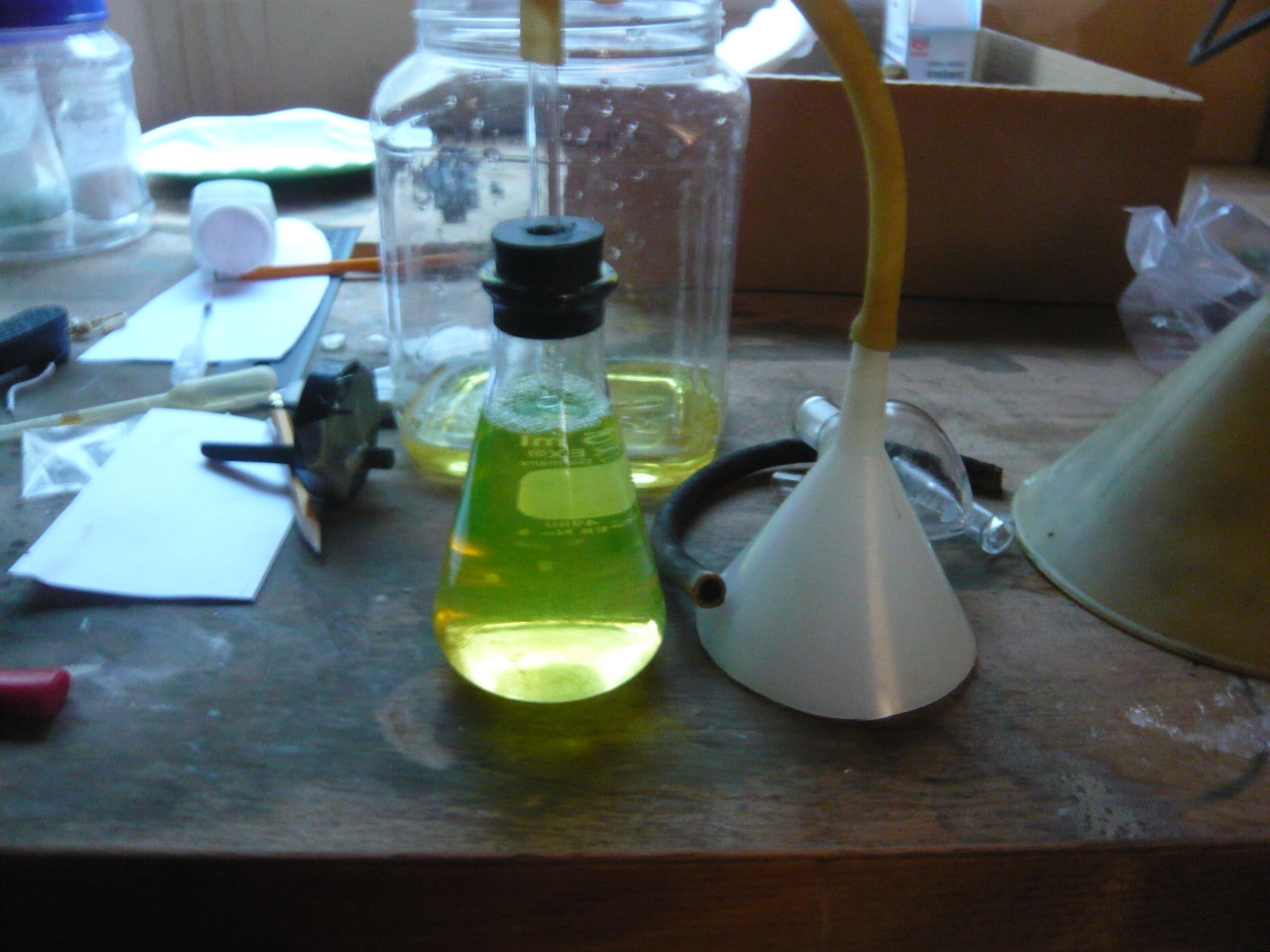
The way I did it was to fill a 500ml Erlenmeyer flask to around the 300ml mark with this ammonia, stopper the top and then run a hose out from that little nozzle in the side.
The hose fed through to the bottom of a very tall, very thin glass jar (the taller and thinner the better). My jar was a fancy jar for holding olive oil and it has a bottom diameter of about 45mm, a height of around 300mm and a top diameter of about 20mm. A tall measuring cylinder would work well too, though.
Anyway, the jar was filled with ice-cold water and was sitting in a bigger jar also full of cold water, with extra ice cubes

So what you do is heat up the sudsy ammonia until it is boiling. This drives off the ammonia because the solubility of gasses decrease as the temperature increases. The ammonia gas, along with a small amount of water is bubbled through the cold water to re-dissolve it. I dont know how concentrated the ammonia is but when I smelt it it nearly burn my nose off, so it cant be that dilute.
The solution of ammonia you get of is perfectly clear, and much purer than anything you would get via reacting all the soap away. The process isn't that efficient, but like you said the sudsy ammonia is very cheap.
Also the MSDS of "cloudy ammonia" which is the exact same stuff as "sudsy ammonia" can be found here:
http://www.cleanwithsupreme.com.au/download/Cloudy%20Ammonia...



